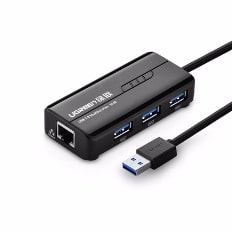Improves the transfer speed for certain Sonnet devices
A new dawn wow. Sonnet Allegro USB 3.0 Driver is a software package designed to enable the USB 3.0 transfer speed between your Mac and Sonnet's Allegro USB 3.0 ExpressCard/34 (part number USB3-2PM-E34) and USB 3.0 PCIe (part number USB3M-E).
Because there is no driver installed. You use that 1042 part of 0x1042 and add it to 'mac os x driver' to get '1042 mac os x driver' or 'mac os x driver 1042' and use that in a www search engine. I mentioned that too. It is easier than getting into a BIOS on a Mac. USB 3.0 Gigabit Ethernet Adapter over USB. The USB 3.0 GigaLinq Ethernet Adapter plugs into your MacBook Air, Ultrabook, Microsoft Surface, Chromebook, or other laptop's USB 3.0 port and allows you to connect a standard RJ-45 Ethernet cable to deliver Internet and network access at up to Gigabit (1000Mbps) speed.
The Sonnet Allegro USB 3.0 Driver is very easy to use since the software package comes with its own installing application.
Filed under
Usb 3.0 Driver For Mac
Sonnet Allegro USB 3.0 Driver 1.0.9 Beta 1
add to watchlistsend us an update- runs on:
- Mac OS X 10.6 or later (Intel only)
- file size:
- 155 KB
- filename:
- dskcd-usb3.0-109b1.dmg
- main category:
- Drivers
- developer:
- visit homepage
top alternatives FREE Synapse audio dune serial number.
Cctalk serial interface. top alternatives PAID
USB-A
Usb 3.0 Driver Mac
USB type A ports have this shape and may also be called USB, USB 2, or USB 3 ports, depending on the USB specification supported.
USB-C
USB type C ports have this shape and are available on Mac as USB 3, Thunderbolt 3, or Thunderbolt / USB 4 ports.
Learn more about identifying the ports on your Mac. If the cable from your USB device doesn't fit in the USB port on your Mac, learn about adapters you can use.
USB specifications
Fast Track Duo Driver Mac Usb 3.0 Download

The specification of a USB port determines the maximum>USB specifications on MacData transferPower deliveryUSB 4Up to 40 GbpsUp to 100W at 20VUSB 3 (USB 3.1 Gen 2)Up to 10 Gbps Up to 15W at 5VUSB 3 (USB 3.1 Gen 1)Up to 5 GbpsUp to 900 mA at 5VUSB 2
Up to 480 MbpsUp to 500 mA at 5VUSB 1.1
Up to 12 MbpsUp to 500 mA at 5V
If a USB device is slow or not recognized
USB specifications all work with each other, but data-transfer speed and power are limited by the cable or device that uses the earliest specification. For example, if you connect a USB 3 device to a USB 2 port, your device is limited to USB 2 speed and power.
- Make sure that the USB port on your Mac and the USB cable used by your device both meet or exceed the USB specification of the device itself.
- Plug your device directly into your Mac instead of a USB hub or other device.
- If your USB device came with an AC power adapter, you should probably use it. Your device might need more power than the port it's plugged into can provide.
- Update the software on your Mac. Also check with the manufacturer of your USB device for firmware or other software updates. Then restart your Mac.

